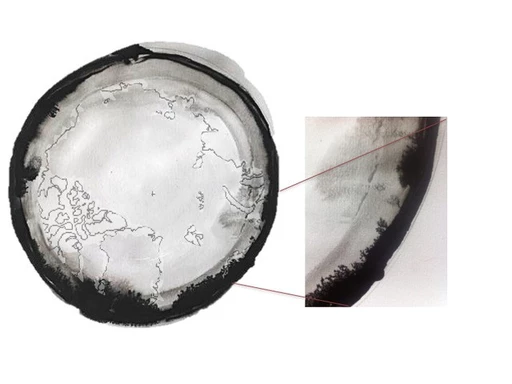
POLAR-IZATION
essay by Judith van der Elst – 14 dec. 2020topic: LAND: about climate breakdown, ownership, territory and colonialism
“One small step for [a] man…”
1969. The world watched the first human set foot on the moon, only eleven years after the NASA (the United States civilian spaceflight program) began its operations. Since that first Apollo moon landing, when Neil Armstrong uttered his memorable words, we have learned a tremendous amount about our planet and our place in the universe beyond our moon. The national flags planted by Neil Armstrong and subsequent moon explorers are mostly still standing, symbols of human exploration and appropriation of uncharted and unchartered territory. In 2005, the then NASA administration identified space colonization as the ultimate goal of the spaceflight programs, because, they argued, in order for humans to survive for millions of years, we need to extend the range of human habitat out from Earth into the solar system. The view from space changed our perspective. Images of our planet taken on those early space flights are iconic. I am enchanted by these images and the scientific and technological innovations that brought us to these places. At the same time, I am worried because for so long we have downplayed the importance of changes that at the same time happen underfoot, partly caused by our behavior. We have ignored and even destroyed valuable knowledge that is distributed across our population on Earth, encoded in many languages that can help us face the challenges that are the consequence of those changes.
“…leave only footprints”
From making fire, pyramids, inventing the wheel, to flying into space, humans have accomplished incredible things that I have studied as an archaeologist/anthropologist, and who knows what the next frontier will be; exploring uncharted territory is part of the human condition. Space colonization is now within the realm of possibilities, no longer science fiction. The NASA states on their website that the establishment of space colonies could be the answer to the problem of competition over resources on our home planet. The question is whether we will change our colonizing behavior of the past toward more sustainable and ethical practices in the future. Neil Armstrong and subsequent space missions did not take this step, they left more than their foot prints, tons of garbage as a matter of fact. It is scattered on the moon and floating around in space.
And so it seems that, with every small step for ‘man’, technological innovations that supported our human expansion in the history of humanity goes hand in hand with environmental change, devastation or destruction of ecosystems. Not only that, but it also comes at the expense of many indigenous peoples, through strategies of displacement, exploitation, ethnocide or even genocide, the flip side of the coin.
It is a dilemma I, and with me many others, have struggled with: how to reconcile our excitement over incredible innovation with the tolerance of atrocious collateral damages. Is it possible to “take nothing but memories, and leave only footprints”, another memorable quote. This one is attributed to Chief Si’Ahl, a well-known leader of the Suguamish and Duwamish tribe (early 19th century), who allegedly pursued a path of accommodation and collaboration to white settlers, yet argued in favor of ecological responsibly, and respect for Native American land rights. Can history inspire us to pursue the possibility of tapping into human creativity and desire for innovation, while at the same time honoring our connection to the land, valuing the ecological communities on which we depend? Can we balance these opposing forces in sustainable ways? Threatened for centuries, indigenous peoples around the world are leading by example, urging us to take better care of our lands and respect those of us who already do so. I support these efforts and question the consequences for doing so. 1)
1969. The world watched the first human set foot on the moon, only eleven years after the NASA (the United States civilian spaceflight program) began its operations. Since that first Apollo moon landing, when Neil Armstrong uttered his memorable words, we have learned a tremendous amount about our planet and our place in the universe beyond our moon. The national flags planted by Neil Armstrong and subsequent moon explorers are mostly still standing, symbols of human exploration and appropriation of uncharted and unchartered territory. In 2005, the then NASA administration identified space colonization as the ultimate goal of the spaceflight programs, because, they argued, in order for humans to survive for millions of years, we need to extend the range of human habitat out from Earth into the solar system. The view from space changed our perspective. Images of our planet taken on those early space flights are iconic. I am enchanted by these images and the scientific and technological innovations that brought us to these places. At the same time, I am worried because for so long we have downplayed the importance of changes that at the same time happen underfoot, partly caused by our behavior. We have ignored and even destroyed valuable knowledge that is distributed across our population on Earth, encoded in many languages that can help us face the challenges that are the consequence of those changes.
“…leave only footprints”
From making fire, pyramids, inventing the wheel, to flying into space, humans have accomplished incredible things that I have studied as an archaeologist/anthropologist, and who knows what the next frontier will be; exploring uncharted territory is part of the human condition. Space colonization is now within the realm of possibilities, no longer science fiction. The NASA states on their website that the establishment of space colonies could be the answer to the problem of competition over resources on our home planet. The question is whether we will change our colonizing behavior of the past toward more sustainable and ethical practices in the future. Neil Armstrong and subsequent space missions did not take this step, they left more than their foot prints, tons of garbage as a matter of fact. It is scattered on the moon and floating around in space.
And so it seems that, with every small step for ‘man’, technological innovations that supported our human expansion in the history of humanity goes hand in hand with environmental change, devastation or destruction of ecosystems. Not only that, but it also comes at the expense of many indigenous peoples, through strategies of displacement, exploitation, ethnocide or even genocide, the flip side of the coin.
It is a dilemma I, and with me many others, have struggled with: how to reconcile our excitement over incredible innovation with the tolerance of atrocious collateral damages. Is it possible to “take nothing but memories, and leave only footprints”, another memorable quote. This one is attributed to Chief Si’Ahl, a well-known leader of the Suguamish and Duwamish tribe (early 19th century), who allegedly pursued a path of accommodation and collaboration to white settlers, yet argued in favor of ecological responsibly, and respect for Native American land rights. Can history inspire us to pursue the possibility of tapping into human creativity and desire for innovation, while at the same time honoring our connection to the land, valuing the ecological communities on which we depend? Can we balance these opposing forces in sustainable ways? Threatened for centuries, indigenous peoples around the world are leading by example, urging us to take better care of our lands and respect those of us who already do so. I support these efforts and question the consequences for doing so. 1)
Wandering
Ever since we walked out of Africa around 50.000 years ago, there was no stopping us, Yes, it took a while, but since then humans have pretty much reached all corners of Earth on foot and floating, following animals to hunt. For long, new places could easily be found, before things got crowded, or in response to climatic variations, and before competition over land and resources got nasty. Even the far corners, if such a thing can be said of our sphere, are occupied by our species. As an archaeologist I am interested in how humans adapt to their environment, how people make a living, especially in places that are less hospitable, deserts and other arid environments like the circumpolar region, where glacial movement limits the survival of plants and animals. As a human being, for me, such places are where I feel most alive, where I sense my interdependence to the larger world is most pronounced. I wonder with each technological innovation what part of this experience gets lost in the process. The feeling of vulnerability and awe, to hang in the balance of these incredible forces that keep our solar system spinning.
The polar region, far from our equatorial origin, where day and night happen on a different scale, where light and darkness are a different dimension, is the focus of an innovative project led by indigenous reindeer herders, in collaboration with NASA and other partners.2) The overall stated project goal of the Reindeer Mapper project is to “promote a new kind of science where traditional knowledge is integrated into the management of the natural environment in the Arctic” to “improve decision making for sustainable reindeer husbandry and as bottom line to improve the quality of life of reindeer herders.” Reading about the project makes me excited, as the stated motivation and method is close to the work I have pursued over the years, to use spatial technologies in support of renaming traditional lands. I understand why collaboration with NASA is beneficial for the reindeer herders. But somehow I have a strange feeling, why is NASA interested in the health and well-being of reindeer communities? What is their ulterior motive and is it different than explorers and colonialist of the past, who appropriated selected goods and knowledge, while taking people’s lives, land and livelihoods?
Ever since we walked out of Africa around 50.000 years ago, there was no stopping us, Yes, it took a while, but since then humans have pretty much reached all corners of Earth on foot and floating, following animals to hunt. For long, new places could easily be found, before things got crowded, or in response to climatic variations, and before competition over land and resources got nasty. Even the far corners, if such a thing can be said of our sphere, are occupied by our species. As an archaeologist I am interested in how humans adapt to their environment, how people make a living, especially in places that are less hospitable, deserts and other arid environments like the circumpolar region, where glacial movement limits the survival of plants and animals. As a human being, for me, such places are where I feel most alive, where I sense my interdependence to the larger world is most pronounced. I wonder with each technological innovation what part of this experience gets lost in the process. The feeling of vulnerability and awe, to hang in the balance of these incredible forces that keep our solar system spinning.
The polar region, far from our equatorial origin, where day and night happen on a different scale, where light and darkness are a different dimension, is the focus of an innovative project led by indigenous reindeer herders, in collaboration with NASA and other partners.2) The overall stated project goal of the Reindeer Mapper project is to “promote a new kind of science where traditional knowledge is integrated into the management of the natural environment in the Arctic” to “improve decision making for sustainable reindeer husbandry and as bottom line to improve the quality of life of reindeer herders.” Reading about the project makes me excited, as the stated motivation and method is close to the work I have pursued over the years, to use spatial technologies in support of renaming traditional lands. I understand why collaboration with NASA is beneficial for the reindeer herders. But somehow I have a strange feeling, why is NASA interested in the health and well-being of reindeer communities? What is their ulterior motive and is it different than explorers and colonialist of the past, who appropriated selected goods and knowledge, while taking people’s lives, land and livelihoods?

The Sami are indigenous peoples living in the polar region, specifically, the northern part of the Scandinavian Peninsula and much of the Kola Peninsula. Sapmi is the name of their traditional territory. They are also inhabitants of the moderns states of Sweden, Norway, Finland and Russia, boundaries of which crosscut their traditional lands. The Sami, together with other circumpolar reindeer herding peoples are now organized in the International Centre for Reindeer Husbandry since 2005, taking the initiative to “enhance understanding for world reindeer husbandry and reindeer peoples, their traditional knowledge and their future development.” 3)
Reindeer herding, has a long history in the region. The incredible rock art around Alta, in northern Norway, dated to around 4200 BC., serves as testimony. 4) The Sami are now the only, or maybe more appropriately, the last indigenous group living within the European Union Area. The documentary, ‘Jagd am Polarkreis’ addresses the tension between traditional lands and modern politics, as a territorial dispute between Sami herders and the pleasure hunter, who both have rights based on being citizens of the modern nation state of Sweden. The makers are careful not to take sides.
I, however, feel nudged to take the side of the Sami. Mainly because I base my judgement on information that is missing in the documentary that, I believe, should be included in this story. Information that addresses the fact that humans and reindeer have for time immemorial been engaged in a symbiotic relationship in this land, the reindeer as a vital part of this unique ecosystem. The reindeer were never fully domesticated. The Sami follow the animals on their natural migration routes, that is, until modern times.
Like many other indigenous peoples around the world, the Sami have suffered modern state operated programs of forced assimilation and ethnocide. To speak indigenous languages was often officially prohibited, along with efforts to disrupt traditional lifestyles. Fortunately, these measures were never completely successful. For instance, the Sami were still able to use their language and art also as oppositional force, to convey hidden messages. 5) After World War II, the tides of tolerance also began to change, human rights became recognized on a global scale. Unfortunately, world economic prosperity also meant an increase in demand for resources. Land granted to indigenous peoples, initially believed to be less valuable, often turned out to be sources of sought after raw materials for modern economies. Strategies of exploration and exploitation have changed over the years, but land is still contested and indigenous peoples mostly remain in disadvantageous positions. The Sami region is for instance a booming mining region. Ironically, the quest for ‘green’ batteries (nickel, cobalt) for electric cars is now threatening reindeer migration routes. 6)
Reindeer herding, has a long history in the region. The incredible rock art around Alta, in northern Norway, dated to around 4200 BC., serves as testimony. 4) The Sami are now the only, or maybe more appropriately, the last indigenous group living within the European Union Area. The documentary, ‘Jagd am Polarkreis’ addresses the tension between traditional lands and modern politics, as a territorial dispute between Sami herders and the pleasure hunter, who both have rights based on being citizens of the modern nation state of Sweden. The makers are careful not to take sides.
I, however, feel nudged to take the side of the Sami. Mainly because I base my judgement on information that is missing in the documentary that, I believe, should be included in this story. Information that addresses the fact that humans and reindeer have for time immemorial been engaged in a symbiotic relationship in this land, the reindeer as a vital part of this unique ecosystem. The reindeer were never fully domesticated. The Sami follow the animals on their natural migration routes, that is, until modern times.
Like many other indigenous peoples around the world, the Sami have suffered modern state operated programs of forced assimilation and ethnocide. To speak indigenous languages was often officially prohibited, along with efforts to disrupt traditional lifestyles. Fortunately, these measures were never completely successful. For instance, the Sami were still able to use their language and art also as oppositional force, to convey hidden messages. 5) After World War II, the tides of tolerance also began to change, human rights became recognized on a global scale. Unfortunately, world economic prosperity also meant an increase in demand for resources. Land granted to indigenous peoples, initially believed to be less valuable, often turned out to be sources of sought after raw materials for modern economies. Strategies of exploration and exploitation have changed over the years, but land is still contested and indigenous peoples mostly remain in disadvantageous positions. The Sami region is for instance a booming mining region. Ironically, the quest for ‘green’ batteries (nickel, cobalt) for electric cars is now threatening reindeer migration routes. 6)
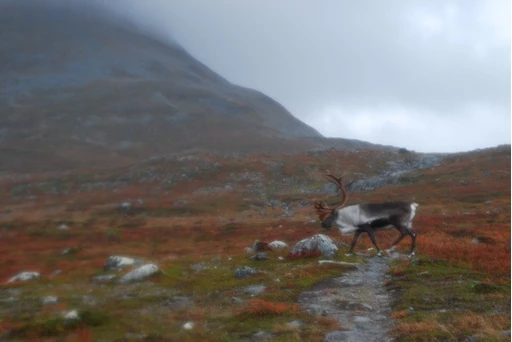
Traversing
The first time I visited the Sapmi region I was invited to participate in the Fieldnotes program organized by Bioart society in Kilpisjärvi in northern Finland, close to the Swedish and Norwegian border in 2015. 7) I was part of a group hosted by Matthew Biederman and Marko Peljhan, artist/scientists and founders of the Arctic Perspective Initiative, along with Leena and Oula Valkeapää, artist and Sami herder respectively. 8) Our group explored the border between Finland and Norway. We collected images with a camera on board an airborne drone, visualizing the difference in vegetation on the different sides of the border. Oula, the Sami herder, explained to us that the Finnish-based herds can no longer cross the state border into Norway to reach their traditional summer grazing area. The effect of these regulations is that the herds are restricted to a smaller grazing region, leading to overgrazing of the winter pasture. It also means that the animals need to be supplementally fed in order to get sufficient energy to get through the winter.
The first time I visited the Sapmi region I was invited to participate in the Fieldnotes program organized by Bioart society in Kilpisjärvi in northern Finland, close to the Swedish and Norwegian border in 2015. 7) I was part of a group hosted by Matthew Biederman and Marko Peljhan, artist/scientists and founders of the Arctic Perspective Initiative, along with Leena and Oula Valkeapää, artist and Sami herder respectively. 8) Our group explored the border between Finland and Norway. We collected images with a camera on board an airborne drone, visualizing the difference in vegetation on the different sides of the border. Oula, the Sami herder, explained to us that the Finnish-based herds can no longer cross the state border into Norway to reach their traditional summer grazing area. The effect of these regulations is that the herds are restricted to a smaller grazing region, leading to overgrazing of the winter pasture. It also means that the animals need to be supplementally fed in order to get sufficient energy to get through the winter.
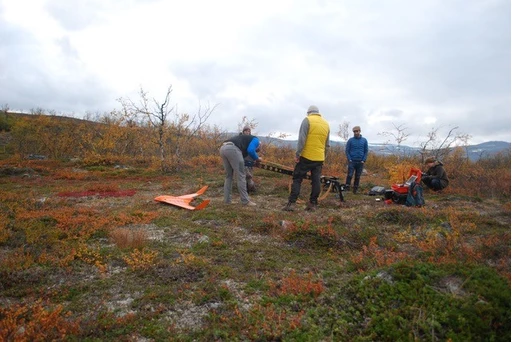
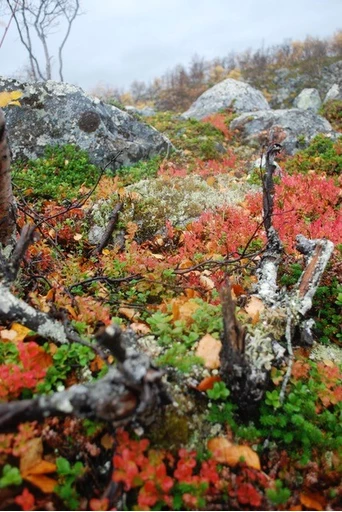
The land is impressive, overwhelming, and this first visit left me longing for more. I am also deeply touched by herding as a lifestyle, empowered by the stories told by Leena and Oula.9) I return the following year, traversing the land on foot, from Norway, south east to Kilpisjärvi, in an effort to get a grasp of the land of reindeer migration. One of the things that are brought to my attention is the huge and recent problem that rising temperatures cause early winter precipitation to fall as rain instead of snow. The effect is that a layer of ice is formed between the soil and the snow cover, making it impossible for the reindeer to access their winter food, the lichen that covers the soil. Many of the animals die as a consequence. Who else to closely monitor these changes then the Sami herders?
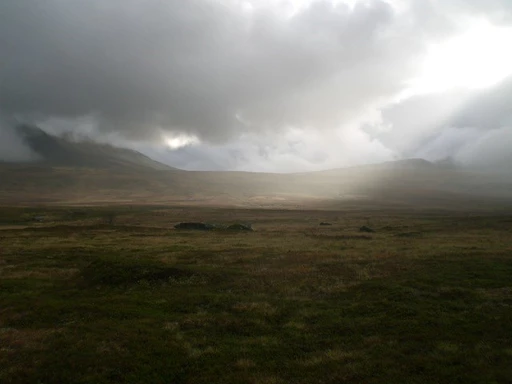
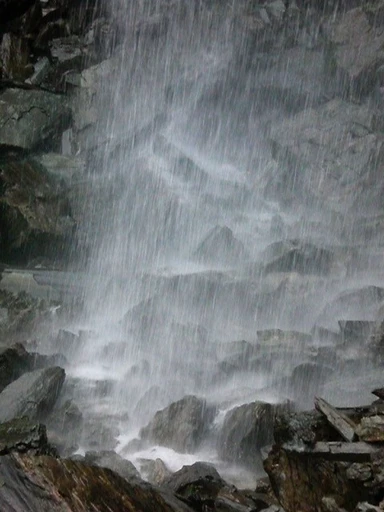
In 2018 I return once again, this time as a host of one of the Fieldnotes groups. It is then that I visit Alta. Every visit adds a new dimension to the enormousness of this landscape and the time-depth of the reindeer herding tradition. Following the herd back south, the winters are dark and difficult, or so I think. Although they are not easy, Leena and Oula, tell me more about the beauty of the winter landscape when snow is illuminated and reflects Northern Lights. It must be incredible. Meanwhile, I tell them, I have started to work as a herder in northern Germany and Norway. Spending the summer with a hundred-head goat herd on the alp, in the hope I can someday be prepared to participate in a reindeer herding season. To become immersed in this overpowering landscape in which the notion of human domination over nature is immediately squashed. 10) To become aware of the natural forces, space and time, I have no words for it. I am in awe. The Sami do have words for it. Specific snow conditions for instance, to express the ability for the reindeer to access food underneath the layer of snow, understanding the route ahead for the reindeer to sustain themselves.
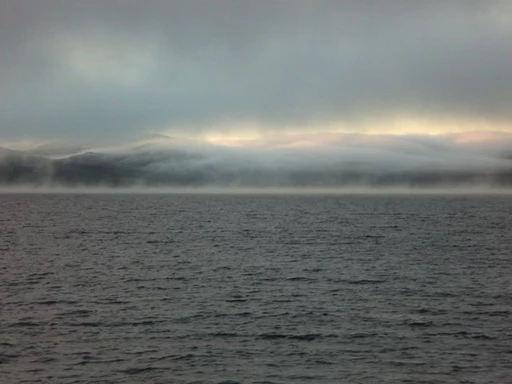
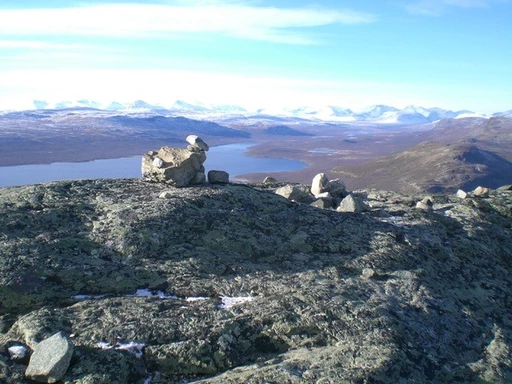
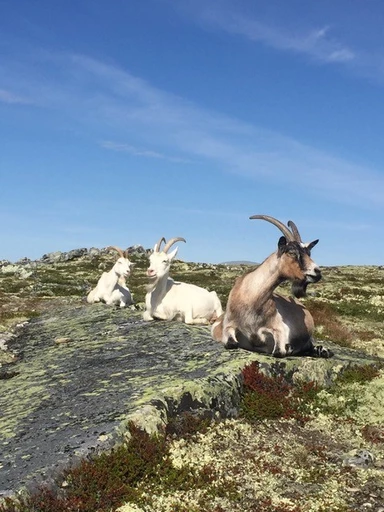
Traversing the land, a visceral experience, yet my scientific-based knowledge adds an extra dimension for me. Knowing that the polar circle is where Earth spins around its axis, tilted in its position in relationship to the Sun, balanced by gravitational forces of other bodies in our solar system. The Earth spins, and wobbles around its axis, and its path around the Sun, changes over time, from circular to elliptical in long-term cycles, beyond the human scale. Even our axis anchor point, True North, changes its relationship to magnetic north, known as the wandering pole, powerful, poetic. Along with our species behavior, these dynamic forces now contribute to the Arctic region to warm up about twice the rate of the global average. The Sami and other reindeer herders in the circumpolar region who have made a living in this environment for thousands of years, are now deeply affected by climate change as well as curtailed by institutional threats. The knowledge encoded in their language, such as the terminology for different snow conditions are also of interest to NASA, as such distinctions can only be made on the ground after lifetimes of traversing this land. It provides new insights on how our earthly climate is changing and the vulnerability of ecosystem to such changes.

Ground truth
Earth orbiting satellites provide a view from above, pioneered by NASA and other space agencies. It is empowering. Being able to zoom in and out, analyzing multiple dimensions, is what attracted my interest in these new technologies in the first place, opening up hidden worlds. For archaeologists this was fantastic, with airborne RADAR (Radio Detection and Ranging) sensors for instance, it became possible to ‘see’ beneath the surface in desert environments. With LIDAR (Light Detection and Ranging) technology, we could suddenly reach below the tree canopy, revealing temples that were overgrown for centuries. Not simply photographs, but reflected energy waves that could be transformed, enhanced, showing patterns of unknown realities. There is a caveat. Not all patterns reveal the physical reality, but are artifacts of statistical procedures, groups of pixels that just look like something. Enter Ground Truth.
Whether ancient temples, modern weapon repositories, or changes in the landscape over time, imagery can be deceptive. Checking on the ground is necessary to avoid blunders, but also to make these technologies better, more intelligent, accurately matching digital patterns with physical realities. It also immediately raises the question: better for whom? Maps were never neutral, in worst case, they were used as instruments of exploitation and colonization.
Ground truth, a concept and method developed to verify air- and spaceborne imagery, can potentially be extended to include aspects of reality beyond the physical sciences, to match digital data with socio-economic and cultural situations. What happens in the land.
The small project I participated in Kilpisjärvi is an example. The aerial view shows a sharp division of differences in vegetation cover, along the state border. Overgrazing on the Finnish side, supporting an ecological argument that there are too many reindeer herders. On the ground it is different; the reindeer can no longer follow their natural migration routes as result of state politics, and therefore graze the winter pasture also in summer, with foreseeable consequences. The reindeer, as part of the ecosystem, now forcibly impact the natural processes. The Sami, who for centuries have followed, accompanied and guided the reindeer in their natural tracks in a symbiotic relationship, observing the patterns of environmental dialogues, have learned and encoded these interactions as valuable knowledge in their language and traditions. Detailed knowledge of snow, snowfall, snow composition, following the winds, recognizing the paths where it is possible for the reindeer to feed.
Earth orbiting satellites provide a view from above, pioneered by NASA and other space agencies. It is empowering. Being able to zoom in and out, analyzing multiple dimensions, is what attracted my interest in these new technologies in the first place, opening up hidden worlds. For archaeologists this was fantastic, with airborne RADAR (Radio Detection and Ranging) sensors for instance, it became possible to ‘see’ beneath the surface in desert environments. With LIDAR (Light Detection and Ranging) technology, we could suddenly reach below the tree canopy, revealing temples that were overgrown for centuries. Not simply photographs, but reflected energy waves that could be transformed, enhanced, showing patterns of unknown realities. There is a caveat. Not all patterns reveal the physical reality, but are artifacts of statistical procedures, groups of pixels that just look like something. Enter Ground Truth.
Whether ancient temples, modern weapon repositories, or changes in the landscape over time, imagery can be deceptive. Checking on the ground is necessary to avoid blunders, but also to make these technologies better, more intelligent, accurately matching digital patterns with physical realities. It also immediately raises the question: better for whom? Maps were never neutral, in worst case, they were used as instruments of exploitation and colonization.
Ground truth, a concept and method developed to verify air- and spaceborne imagery, can potentially be extended to include aspects of reality beyond the physical sciences, to match digital data with socio-economic and cultural situations. What happens in the land.
The small project I participated in Kilpisjärvi is an example. The aerial view shows a sharp division of differences in vegetation cover, along the state border. Overgrazing on the Finnish side, supporting an ecological argument that there are too many reindeer herders. On the ground it is different; the reindeer can no longer follow their natural migration routes as result of state politics, and therefore graze the winter pasture also in summer, with foreseeable consequences. The reindeer, as part of the ecosystem, now forcibly impact the natural processes. The Sami, who for centuries have followed, accompanied and guided the reindeer in their natural tracks in a symbiotic relationship, observing the patterns of environmental dialogues, have learned and encoded these interactions as valuable knowledge in their language and traditions. Detailed knowledge of snow, snowfall, snow composition, following the winds, recognizing the paths where it is possible for the reindeer to feed.
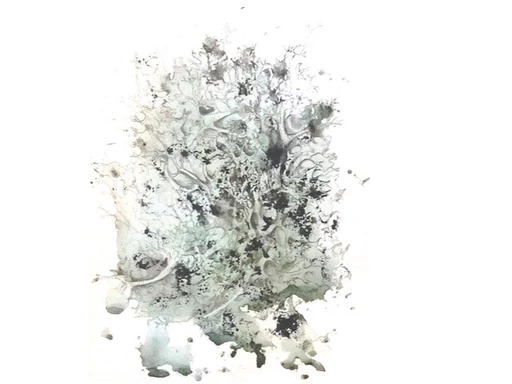
Reindeer hooves, dig deeper and leap
The footsteps of the reindeer, called kiekerö, who dig a pit with their hooves in the snow to access edible lichen, using their sense of smell and guided by their herders. NASA providing the big picture, assisting the herders in navigating changing conditions, while at the same time gaining invaluable knowledge of different nuances of snow cover indicating specific conditions underneath. The polar region is of interest to NASA not only for climate change research and the health of our planet, I suspect, but part of a grander scheme of space colonization. Although not expressed on the Reindeer Mapper website, the International Polar Year page gives some hints of what is to come. Stating: “NASA’s investment in exploring Earth’s poles has built the foundation for a new era of scientific exploration at Mars polar regions. …” and below that: “NASA’s mission to extend human exploration into the solar system begins with creating a base in the polar regions of the moon. Learning how best to “live off the land” on the moon requires a better understanding of the extreme conditions and available resources at the lunar poles.” 11)
Soon, the Artemis program will be launched, planning its first moon (female/male) landing since the Apollo program ended in 1972. Base camp will be set up at the lunar South Pole. It is supposed to be a sustainable mission, the next giant leap.
The footsteps of the reindeer, called kiekerö, who dig a pit with their hooves in the snow to access edible lichen, using their sense of smell and guided by their herders. NASA providing the big picture, assisting the herders in navigating changing conditions, while at the same time gaining invaluable knowledge of different nuances of snow cover indicating specific conditions underneath. The polar region is of interest to NASA not only for climate change research and the health of our planet, I suspect, but part of a grander scheme of space colonization. Although not expressed on the Reindeer Mapper website, the International Polar Year page gives some hints of what is to come. Stating: “NASA’s investment in exploring Earth’s poles has built the foundation for a new era of scientific exploration at Mars polar regions. …” and below that: “NASA’s mission to extend human exploration into the solar system begins with creating a base in the polar regions of the moon. Learning how best to “live off the land” on the moon requires a better understanding of the extreme conditions and available resources at the lunar poles.” 11)
Soon, the Artemis program will be launched, planning its first moon (female/male) landing since the Apollo program ended in 1972. Base camp will be set up at the lunar South Pole. It is supposed to be a sustainable mission, the next giant leap.
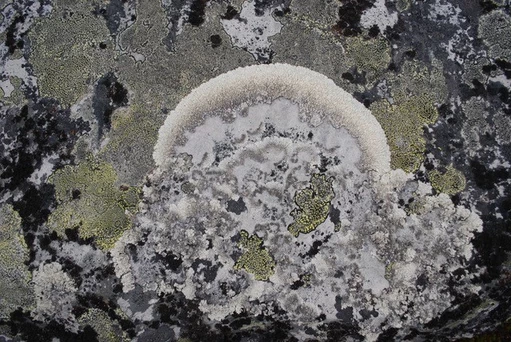
Conclusion / the big picture
The question asked at the beginning of this essay, if we can balance opposing forces, our quest for innovation and exploration and our desire to live sustainably on our home planet, is not so easy to answer. The Reindeer mapper project demonstrates how different approaches can be integrated as a new form of science; the conflicting interest between mining exploration for ‘green’ car batteries and Sami herding land access on the other hand, shows how difficult it is when we are faced with choices. To choose to support indigenous initiatives of land stewardship holds radical consequences for our individual and collective behavior. Rampant resource exploitation, on Earth and as is now planned for the moon, is what sustains our modern economy. It is also that what threatens the health and well-being of many indigenous communities and humanity as a whole. How far do you want to go?
The question asked at the beginning of this essay, if we can balance opposing forces, our quest for innovation and exploration and our desire to live sustainably on our home planet, is not so easy to answer. The Reindeer mapper project demonstrates how different approaches can be integrated as a new form of science; the conflicting interest between mining exploration for ‘green’ car batteries and Sami herding land access on the other hand, shows how difficult it is when we are faced with choices. To choose to support indigenous initiatives of land stewardship holds radical consequences for our individual and collective behavior. Rampant resource exploitation, on Earth and as is now planned for the moon, is what sustains our modern economy. It is also that what threatens the health and well-being of many indigenous communities and humanity as a whole. How far do you want to go?
Notes
1) for instance indigenousrising.org ; fnx.org
2) icr.arcticportal.org/about-ealat ;
lcluc.umd.edu/projects/reindeer-mapper-remote-sensing-and-gis-based-system-bring-indigenous-traditional-and-2
3) reindeerherding.org
4) whc.unesco.org/en/list/352/
5) Gaski, H. (January 01, 1993). The Sami People: The "White Indians" of Scandinavia. American Indian Culture and Research Journal, 17, 1, 115-128.
6) thebarentsobserver.com/en/node/7082
7) bioartsociety.fi
8) arcticperspective.org
9) coastguardgirrls.com/938-2/ new work by Leena and Oula Valkeapää
10) artjournal.collegeart.org/?page_id=11202; artjournal.collegeart.org/?p=11207
11) www.nasa.gov/mission_pages/IPY/about/index.html
2) icr.arcticportal.org/about-ealat ;
lcluc.umd.edu/projects/reindeer-mapper-remote-sensing-and-gis-based-system-bring-indigenous-traditional-and-2
3) reindeerherding.org
4) whc.unesco.org/en/list/352/
5) Gaski, H. (January 01, 1993). The Sami People: The "White Indians" of Scandinavia. American Indian Culture and Research Journal, 17, 1, 115-128.
6) thebarentsobserver.com/en/node/7082
7) bioartsociety.fi
8) arcticperspective.org
9) coastguardgirrls.com/938-2/ new work by Leena and Oula Valkeapää
10) artjournal.collegeart.org/?page_id=11202; artjournal.collegeart.org/?p=11207
11) www.nasa.gov/mission_pages/IPY/about/index.html
This essay is part of the LAND project, about climate breakdown, property, territory and colonialism and how these things relate to each other. Can we understand how we got into the current precarious situation? What does "ownership" mean for our relationship with each other and the land? And what role does language play as a reflection of our interaction with each other, nature and the earth?
refered to from:
people – 06 nov. 2015
